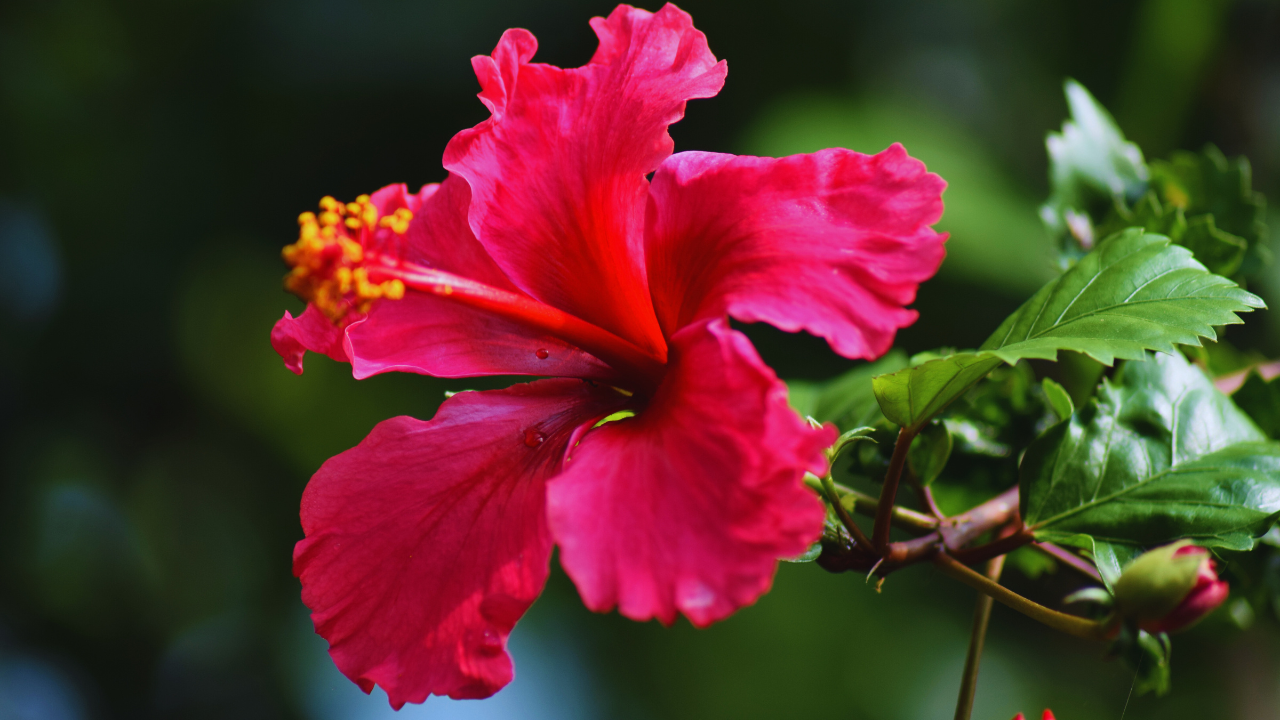Table of Contents

Hibiscus plants, with their bright and big flowers, are a beautiful addition to any garden. They not only bring a tropical beauty but also attract helpful insects like bees and butterflies. While growing a healthy hibiscus plant needs some care, with the right conditions, your garden can bloom with colourful flowers throughout the year. Here’s an easy guide to growing healthy hibiscus plants in your garden.
1. Selecting the Right Hibiscus Variety
There are two main types of hibiscus plants:
Tropical Hibiscus: These are evergreen plants that thrive in warm, humid climates. They produce bright, showy flowers but are not frost-tolerant.
Hardy Hibiscus: These hibiscus varieties are better suited for cooler climates. Their flowers are larger, and they can withstand cold temperatures.
When selecting your hibiscus plant, consider your local climate. For tropical regions, tropical hibiscus will flourish, while hardy hibiscus is best suited for colder areas.
2. Choosing the Ideal Location
Hibiscus plants love sunlight. Choose a location in your garden that receives 6-8 hours of direct sunlight daily. Insufficient sunlight can lead to poor flower production and slower growth. Make sure the spot is also well-ventilated to keep the plant healthy and free of pests.
If you are planting tropical hibiscus in areas with intense heat, consider some afternoon shade to prevent the leaves from scorching.
3. Soil Preparation
Hibiscus plants prefer well-draining soil that is rich in organic matter. Before planting, ensure your soil has the right composition:
– Sandy or loamy soil is ideal.
– Add organic compost to improve the soil’s fertility and drainage.
– The pH level of the soil should be slightly acidic, between 6.0 and 6.5. You can test the pH using a soil testing kit and adjust it if necessary with amendments like sulfur (to lower pH) or lime (to raise pH).
4. Planting Hibiscus
When planting hibiscus in your garden:
– Dig a hole that is twice the width of the root ball and the same depth.
– Space the plants at least 2-3 feet apart to allow good air circulation.
– Place the hibiscus in the hole, making sure the top of the root ball is level with the soil surface.
– Backfill the hole with soil and gently press it down to remove air pockets.
– Water the plant thoroughly after planting to help it establish in its new location.
5. Watering Requirements
Hibiscus plants love water but dislike waterlogged soil. Here are some watering tips:
– Tropical hibiscus should be watered frequently, especially during hot weather. Keep the soil consistently moist but not soggy.
– Hardy hibiscus can tolerate some dryness, but it’s best to keep the soil evenly moist, especially during the blooming season.
– Mulching around the base of the plant helps retain moisture and keep the roots cool. Use organic mulch like shredded bark or straw.
6. Fertilizing Hibiscus
Hibiscus plants are heavy feeders and benefit from regular fertilization:
– Use a balanced fertilizer (10-10-10 or 20-20-20) or one that is specially formulated for blooming plants.
– Feed your hibiscus every 4-6 weeks during the growing season (spring and summer). In regions with mild winters, reduce feeding during the cooler months.
– Avoid over-fertilizing, as excessive nutrients can lead to leaf growth at the expense of flowers. Organic options like compost or fish emulsion can also promote healthy growth.
7. Pruning and Deadheading
Pruning your hibiscus encourages bushier growth and more blooms:
– Prune lightly in early spring to shape the plant and remove any dead or weak branches.
– Remove old or fading blooms (deadheading) regularly to encourage new flowers to form.
– For hardy hibiscus, cut back the stems to ground level after the first frost, as they will regrow from the base in spring.
8. Pest and Disease Management
Hibiscus plants can attract pests like aphids, whiteflies, and spider mites. To keep your plant healthy:
– Regularly inspect the undersides of leaves for pests.
– Use insecticidal soap or neem oil to control infestations.
– Ensure good air circulation around the plant to prevent fungal diseases like powdery mildew.
– If the plant shows signs of stress, check the watering schedule, as both overwatering and underwatering can lead to root problems.
9. Winter Care for Hibiscus
In regions with cold winters:
– Tropical hibiscus must be brought indoors or into a greenhouse when temperatures drop below 10°C (50°F). Keep them in a bright, warm spot and water sparingly.
– Hardy hibiscus can be left outside as they will die back in the winter and regrow in the spring.
10. Propagation
You can propagate hibiscus plants through cuttings or seeds:
– Take 4-6 inch cuttings from a healthy plant in late spring or early summer.
– Dip the cut end in rooting hormone and plant it in a pot with a well-draining potting mix.
– Keep the soil moist and place the pot in a bright, warm location. In a few weeks, roots should develop, and you can transfer the cutting to the garden.

